Conserving capital expenses through clinical asset reallocation
Health systems need data-driven insights and technology solutions to optimize the use of their clinical assets and uncover financial savings.
As operating margins continue to fall, health systems can look to an important resource — their clinical assets — as a potential source of financial relief.
Clinical assets account for, on average, about a quarter of health system capital expenses. For many organizations, these assets should be viewed as a strategic pool of resources that can be leveraged to meet health systems’ operational and financial goals.
Utilization monitoring reveals that, in a typical acute care hospital, medical devices are only used 40%-50% of the time. While some devices are in regular use, many others are stashed in closets or hallways, forgotten and wasting space. That may explain why clinical asset inventory levels at many hospitals are 50%-60% higher than national benchmarks.
Indeed, many health systems have an overabundance of devices in their acute care hospitals, even though clinicians may perceive a shortage of needed devices and request the purchase of new ones.
The problem is two-fold: an inadequate inventory of system-wide clinical assets and a misalignment between where devices are located and where they are needed.
In this HFMA executive roundtable, health system executives provide insight on their processes for reallocation of clinical assets as a cost-saving strategy.
How have your capital planning decisions changed since COVID?
Kim Hebert: When COVID hit, we worked with the COO of our system and actually unapproved some capital projects. Then when we started getting the Medicare advanced payments and the CARES ACT money, that helped our operating margin, and we were able to start approving some expenditures.
Unfortunately, because of rising labor costs and supply costs — and also our volume has been really soft — 2022 did not start off well. We have been pushing back some of the capital purchases we had planned. We try to explain to our clinical leaders that if we’re not making money, it is difficult to reinvest in capital items. Our focus for capital has always been patient safety, but obviously everybody’s infrastructure is getting older, so we continue to have needs in many areas.
Pete Seaman: We are in New Mexico, and we had very little impact on our hospital during the first COVID wave. But we panicked and put a new separate entry into our ER with a tent outside for screening and converted a lot of our med-surg rooms to isolation rooms with ventilators in the windows for negative air flow. So that was a little bit of a capital expense, but most of those rooms have been easily converted back to regular med-surg rooms.
Paul Goettl: We are a very small hospital in rural Minnesota and one of our revenue areas is colonoscopies. Our colonoscopy volume has not recovered since COVID for numerous reasons; we are probably only at about half of what we used to see. We had planned to upgrade the whole colonoscopy suite because it’s one of our revenue makers, but that is completely on hold until we get back up to where we used to be.
Tara Alleman: Before COVID, my taxing-district hospital had plans to take a $17 million bond issue to the voters, but we were hit hard by all of the waves of COVID, so that took a back burner. But then we did go to the voters, and it was approved so, within the last several months, we have started to plan the details of spending the money. But now the cost of supplies and the cost of labor is 30%-40% more than before COVID, so we are reprioritizing these projects. We have to explain to the board why this is happening and that we can’t do all the projects we told the voters we would do, and we are helping them with the message to the community.
We are also working with government agencies and philanthropic sources to try to see if we can get some additional funds to still be able to do everything that we need to do. Picking up the plans that you had pre-COVID is a challenge in the post-COVID world because our volume has been soft as well. I think it is because we have not invested in growth for the past three years while we have been trying to put out the fires and save lives. So now we have to build some growth.
How did you handle medical equipment reallocation during the pandemic?
Lisa Nelson: Being in New York state, obviously when COVID hit, we sequestered ventilators and started sending things to New York City. For that first 90 to 180 days, we were partnering with clinical engineering, IT and our operational leaders to assess what equipment we needed and what we would do if we had to allocate ventilators — thank goodness, we did not have to do that.
In the middle of this, Alaris stopped issuing their infusion pump. So we had to figure out how to deploy pumps to where they were needed and make sure that they got tagged so they could go back to the unit that had purchased the devices.
More recently, the supply chain problems have forced us to shift resources. We now think of some assets as a regional [asset] and are sharing some things, not just across hospitals in our system, but, for example, sharing defibrillators with children’s hospitals across upstate New York. So that requires tagging them and tracking them so you can get them back. Of course, we believe patient care first, but you can’t just let things walk out the door because getting them back is always a challenge.
Michelle Brandt: MedStar Health has 10 hospitals across Maryland and the District of Columbia. When COVID hit, we pivoted pretty quickly across our hospitals to become one hospital. So if somebody was admitted to one hospital, they might be moved to another where, for example, there were ICU beds available.
MedStar also put together a complete dashboard to know where we had clinical resources available to allocate as needed. It was just amazing to see how everybody stepped up in that regard. Our communications team was able to use our intranet site to provide detailed information regarding Covid-related policies and resources; this continues today.
How do you take your clinical assets into consideration when evaluating areas for financial savings? How do you identify clinical assets that are available for reallocation?
Nelson: One of the things that we try to do is use the hub-and-spoke model for capital assets like pumps and Holter monitors and other things. When we purchase new assets for the big academic medical center, which is doing a little bit better financially than some of the smaller hospitals, instead of getting rid of the older items on the market, we try to deploy [those assets] to another hospital.
Our clinical engineering folks tend to be pretty aggressive extending the life of capital equipment that way. They always make sure that something is safe, but it might not be the latest and greatest. Then we have to make sure it is integrated into Epic and that the training is done appropriately. So there’s more to it than just moving the equipment. A group of us gets together to consider the downstream effects of these moves.
Hebert: After our merger with Ochsner, one of my smaller hospitals needed two ventilators and somebody within the system had two ventilators that they were not using so they moved those to our books.
The system’s supply chain and procurement process is centralized. In our case, when that team saw our request for ventilators, which had already been approved by our region, they knew that some were available at another facility that could fulfill our request.
Alleman: The centralized team did a really good job with the COVID assets that we absolutely needed during the surges. But for other clinical assets, reallocations come through the service line team. For example, if I need to buy a piece of imaging equipment, my radiology director is talking not only to my CEO but also to the system lead for radiology, who knows what assets are in all of the facilities and manages reallocation.
What is your governance process around capital planning?
Hebert: Our capital committee consists of our regional CEO, CFO and then all of the senior leaders at each of the facilities. We normally have four capital committee meetings a year, and our leaders submit their requests ahead of time. We go through the requests, trying to balance everything. Patient care is the number one priority, and we always run out of capital money early.
After the second quarter, we usually do it by email, so the process funnels through me. We ask a lot of questions like “Can this wait a year?”
How is the shift in care settings impacting your capital planning processes?
Brandt: At MedStar Health, there has been a huge focus on building our ambulatory footprint for several years, and we are still making investments from a strategy standpoint. Even during COVID, we were able to close two acquisitions — one that added 19 more urgent care centers (for a total of 33) and also another primary care group with multiple locations. So we are supporting our growth in that regard. We also continue to grow our ambulatory, radiology and physical therapy network, which includes occupational and speech therapy and home care.
Alleman: Pre-COVID, there was a lot of focus on being over bedded. Do we have too many ICD beds? Do we need an ICU? Our med-surg census was never enough to fill all our beds, so we converted almost half of our med-surg beds into med-psych beds.
Now post-COVID, it’s clear that we need an ICU, and we do need our med-surg beds, but we also need to invest in outpatient growth. So our bond issue is all focused on outpatient. But this sometimes feels like “if you build it, they will come” because right now they are not coming. It’s really challenging to make decisions on what to spend money on.
Would you consider reallocating equipment across your health system as a legitimate savings lever?
Hebert: When we received those two ventilators from another hospital, I looked at that as capital avoidance because it freed up my capital to spend on other things.
We are definitely seeing the opportunity to move things around. I think Ochsner’s corporate office is trying to ensure that when people need things; if somebody has extra equipment, they are sending it to where it is needed instead of having to buy it.
Seaman: If all of our ventilators are in service and there’s another patient who needs a ventilator, we just rent it from our biomed vendor. They can get a rental unit usually on the same day or next day. That prevents us from buying a piece of equipment that we might use for a month or two, then not need again until the next busy season.
Conclusion
Health system finance leaders need a robust inventory system for clinical assets throughout the system and good processes for reallocating assets to meet clinical needs without unnecessary expensive purchases.
HFMA Roundtable Participants
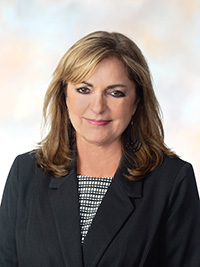
Kim Hebert is CFO of Ochsner Lafayette General in Lafayette, Louisiana
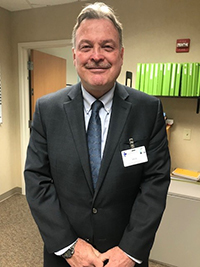
Pete Seaman is vice president of finance at Gerald Champion Regional Medical Center in Alamogordo, New Mexico

Paul Goettl is CFO of North Shore Health Hospital and Care Center in Grand Marais, Minnesota
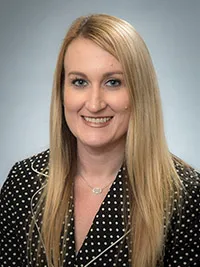
Tara Alleman is CFO at, River Region at Ochsner Health in Kenner, Louisiana
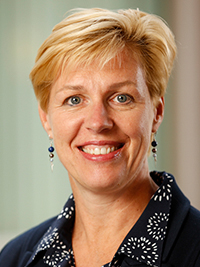
Lisa Nelson is associate vice president of IT applications and chief applications officer at University of Rochester Medical Center in Rochester, New York
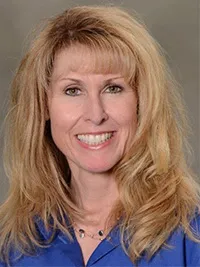
Michelle Brandt is vice president of physician, ambulatory contracting & credentialing at MedStar Health in Columbia, Maryland
About TRIMEDX
As an industry-leading, independent clinical asset management company, TRIMEDX helps healthcare providers transform their clinical assets into strategic tools, driving reductions in operational expenses, optimizing clinical asset capital spend, maximizing resources for patient care, and delivering improved safety & protection.
This published piece is provided solely for informational purposes. HFMA does not endorse the published material or warrant or guarantee its accuracy. The statements and opinions by participants are those of the participants and not those of HFMA. References to commercial manufacturers, vendors, products, or services that may appear do not constitute endorsements by HFMA.





